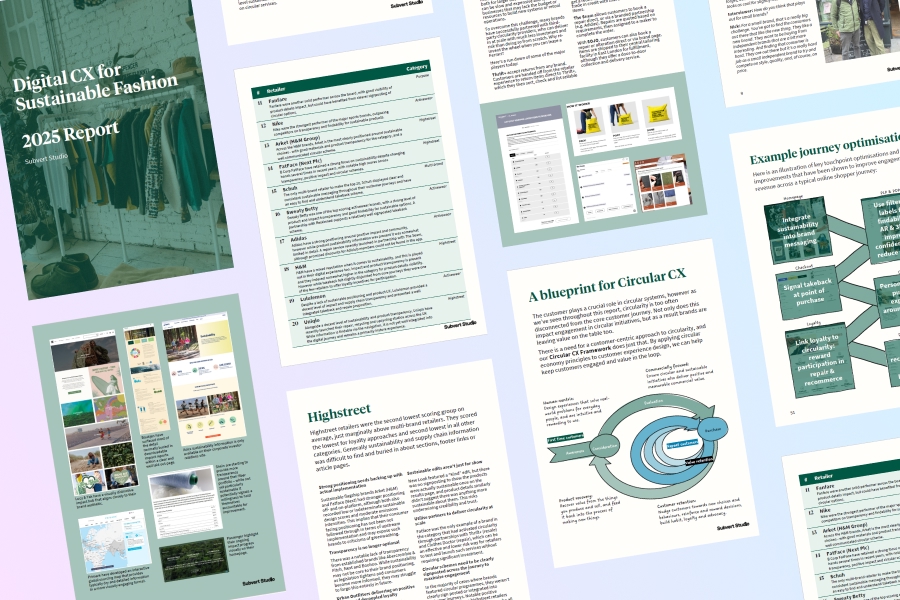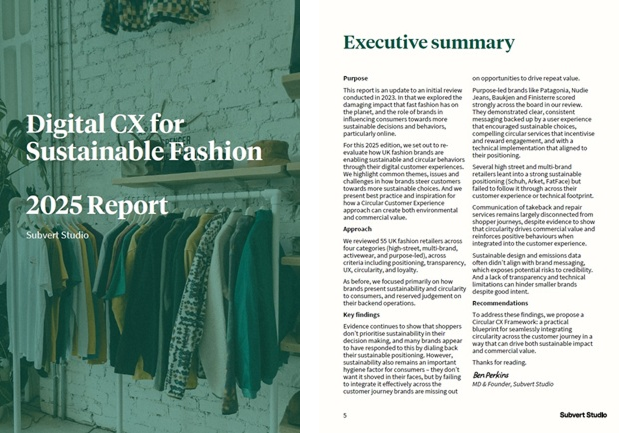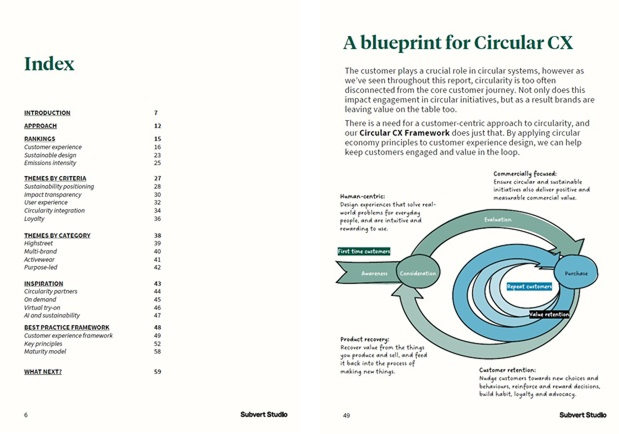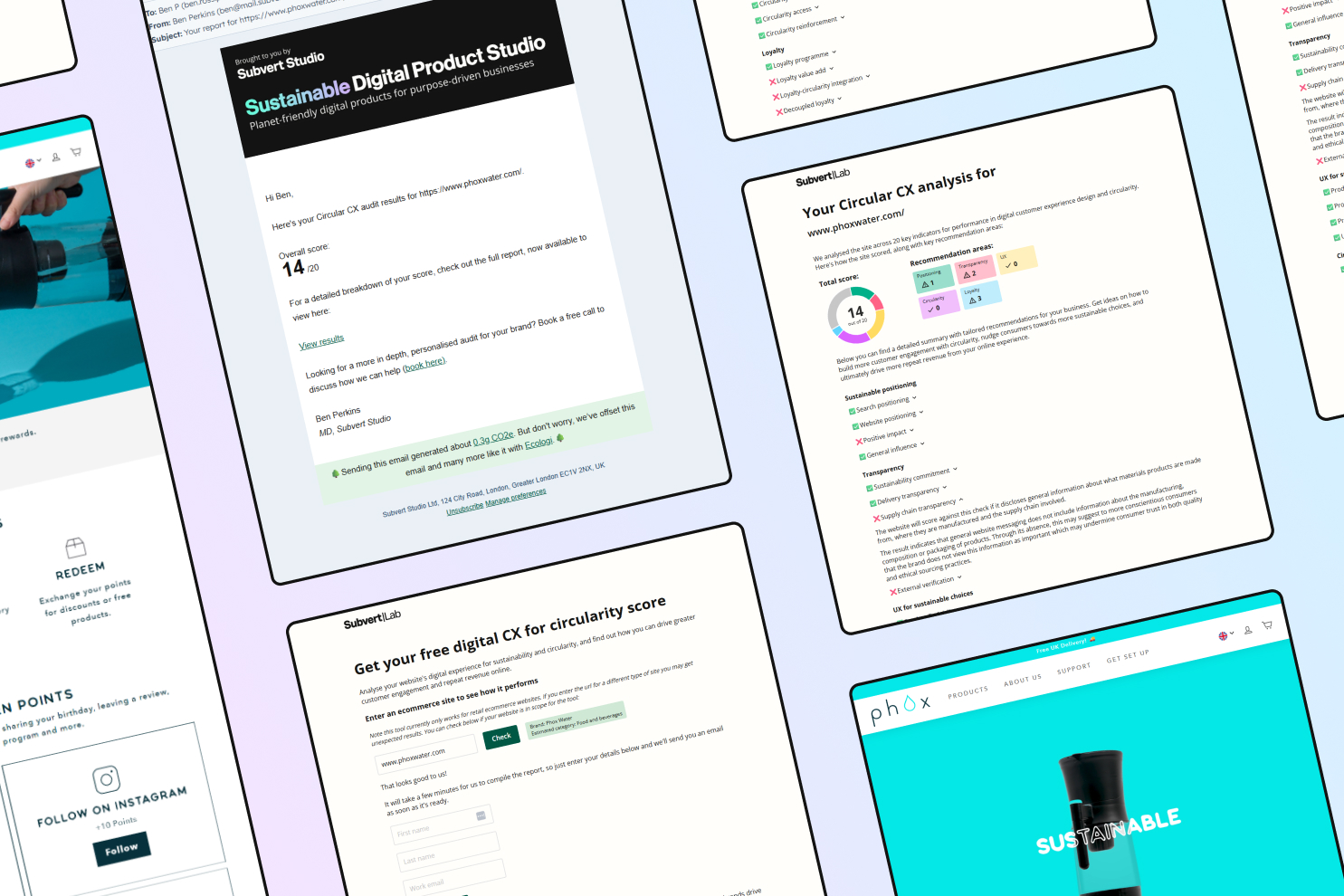Resource
Digital CX in Sustainable Fashion Report 2025

Resource

Our new industry report has revealed that the majority of UK fashion retailers are still falling short when it comes to embedding sustainability and circularity into their digital customer experiences (CX). As a result, the report says, they are not only missing out on environmental impact but also commercial opportunity too.
The fashion industry produces over 1 billion tonnes of greenhouse gas emissions (Carbon Literacy Project, 2021) and 92 million tonnes of waste every year (Earth.Org, 2023). Fast fashion is predicted to grow by 10% over the next 5 years (Fortune Business Insights, 2025).
Despite the clear need for a more sustainable approach to fashion, many circular initiatives have struggled to gain traction at scale. Recent research by YouGov supports this - only 18% of their respondents had actually participated in takeback schemes (YouGov, 2024).
The market remains dominated by price and style, and for most consumers sustainability is a secondary concern - an important hygiene factor, but not the priority in decision making (Ipsos, 2025).
Research has shown that when communicated effectively, circular schemes like takeback and repair can lead to an increase in order values and repeat purchase rates (Harvard Business Review, 2024).
We analysed the digital experience for 55 fashion retailers for our report. We observed that while many brands are dialling back on overt sustainability messaging compared to 2023, still more are struggling to effectively engage consumers with sustainability and circularity through their online experiences. This is leading to missed opportunities to drive customer engagement, retention and incremental revenue.
62% (34) of the retailers reviewed had some form of takeback scheme. Of those, less than half (44%; 15) made it easy to access via their digital experience and just under a third (29%; 10) integrated it into their loyalty programme.
Purpose-led brands like Patagonia, Nudie Jeans, Baukjen and Finisterre scored strongly across the board with consistent brand and customer experiences that promote engagement with sustainable and circular behaviours.
Several high street and multi-brand retailers leant into a strong sustainable positioning (Schuh, Arket, FatFace) but failed to follow it through across their customer experience or technical footprint.
Communication of takeback and repair services remains largely disconnected from shopper journeys, despite evidence to show that communicating circularity early in the journey drives commercial value.
Sustainable design and emissions data often didn’t align with brand messaging, and smaller brands often lacked transparency, which exposes potential credibility risks.
Discover which brands are leading the industry when it comes to circular CX and how you can dial up customer engagement and revenue through circularity. Download our report for free today.


Most industry frameworks for circularity and sustainability tend to focus exclusively on reducing the supply-side impact: optimising operations, supply chain, manufacturing, and recovery. They often neglect the role of brand and consumer in influencing and scaling sustainable behaviours.
Based on the findings in our report, we aim to address this gap with a new framework for “Circular CX”, providing a blueprint for how brands can integrate circularity effectively across their digital customer experience.
The framework includes practical tips on effective solutions from high-performing brands, and guidelines on how to design customer-centric experiences, ensure circularity delivers positive ROI, and use circularity to drive loyalty and retention.
Nick Reed, founder of sustainable menswear brand Neem London was a contributor to the report and shared his insights on the value takeback delivered for his business:
“We run takeback on Neem and non-Neem really fortwo reasons. First, it's an acquisition tool: 90% of customers that are given the credit do go on to purchase. The second reason is retention: it does drive customer retention, they do then repeat purchase.“

.jpg)
